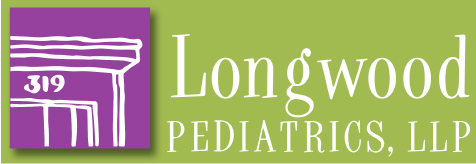When traveling in a car, it is important to make sure that your child is properly secured at all times. All infants and children up to certain weights and heights must be secured in the appropriate car seat or booster. There are many options on the market and it is important to choose a seat that best meets your child’s needs. The options are rear-facing seat, forward-facing seat, booster seat, and eventually a seat belt.
Due to the possibility of injury from airbags, ALL children ages 12 and under should ride in the back seat at all times.
Rear-facing seat
All infants and toddlers should ride in the back seat of the car in a rear-facing position. The current recommendations are that they stay rear-facing as long as possible as this is the best way to keep them safe. Infants and children should remain rear facing until they are at least 2 years of age, no matter how tall or heavy they are. Once they outgrow the rear-facing seat (check the sticker for height and weight limits of your child’s seat), the child is ready to sit in a forward facing in a seat with a harness.
Forward-facing seat
Once a child outgrows the rear-facing position, he or she is ready to have their car seat turned around. Children should be sitting in a in a seat with a five-point harness. It is important to make sure the harness is snugly fit with chest clip placed at armpit level to ensure that the harness fits nicely on the shoulders. The straps should be tight enough to fit a maximum one finger between the strap and your child’s body. Children should remain in a forward facing seat with harness until they reach the highest weight or height allowed by the car seat’s manufacturer.
Booster seat
Once children outgrow forward facing seats they should ride in a booster seat. They should remain in a booster sit until the car’s seat belt fits them properly. This means that the shoulder belt comes across the middle of the child’s chest and shoulder and the lap belt is low and across the thighs. The child should also be tall enough to sit all the way back in the seat and have their knees bent at the edge with their feet hanging down. This typically happens when the child has reached at least 4 feet 9 inch height.
Seat belt
Once the child is at least 4 feet 9 inches, they may be ready to ride in the back seat with just a seat belt. It is important to make sure that the belt fits properly. The seat belt should not come across the child’s neck or face. The belt should come across the middle of the child’s chest and shoulder and the lap belt should sit low and across the thighs.
- More info on the Massachusetts Enhanced Child Passenger Safety Law
- Different types of car seats and when you should use them
- Get your car seat checked to make sure it is correctly placed in the vehicle. Find a local inspection station here.
- The latest regulation changes and recalls
- Car seat information for tall or heavy children

